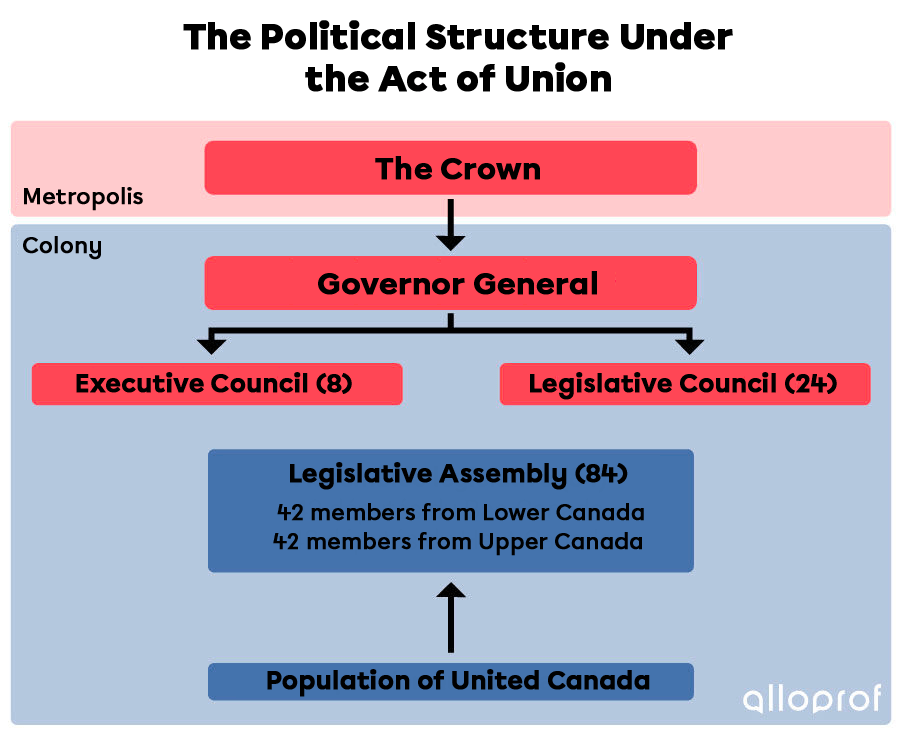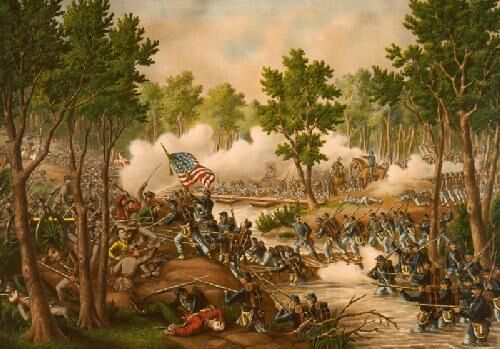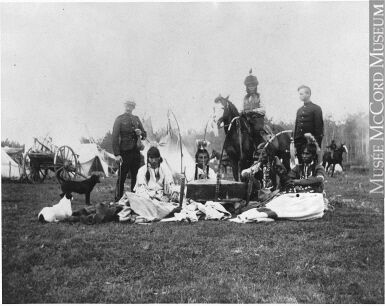After a responsible government was established in 1848, some politicians suggested separating the two provinces again. As early as 1850, this suggestion sparked political debate that eventually led to Confederation in 1867.
After the Act of Union, only one Legislative Assembly was elected in United Canada. The population of Lower Canada started out greater than the population of Upper Canada, but by 1840, it was the reverse. The population of Upper Canada had increased considerably, and Anglophone representatives demanded representation by population or Rep by Pop. This would give them more power in the Legislative Assembly.

There were 10 successive governments between 1854 and 1864, a sign of a very fragile political system. This instability compelled the leaders of the different political parties to form the Great Coalition to find a solution to the issue.
The civil war raging in the United States provided another argument to those seeking constitutional change, because the Americans were a threat to Canada’s territory.

After the victory of the North, Great Britain feared that the Americans would attempt to invade Canada. The sparsely populated land to the west of Upper Canada could have been easily conquered by the Americans. A Federation would make it possible to increase the military strength of the colonies and organize its defence in case of an attack.
By the 1850s, Great Britain had become less invested in its North American colonies, seeing them as an economic, military and political burden. The mother country wanted to increase the independence of its colonies to alleviate this strain. The United Kingdom ended the protectionist policy it had in place for its colonies, which had a major impact on Canada’s economy, since it shipped a significant portion of its exports to the mother country.
In 1854, the Canadian government signed a trade agreement with the U.S.. This treaty lasted for about a decade and favoured trade between the two nations. It gave factories in Canada a market for exporting their merchandise. However, when the treaty expired in 1866, the United States chose not to renew the agreement.
Canada had to find new markets and new ways of encouraging people to buy merchandise produced within the colony. While developing a market between the east and west of the continent was one possibility at the time, the colonies needed a strong government to get the project rolling.
The idea of creating a coast-to-coast railroad to stimulate trade between the regions of the territory was suggested in 1850. However, it would be very expensive to build such a railroad, which meant capital had to be found. Work on the Intercolonial Railway began around this same time.

A large rail network was required for each colony to expand its economy. No single province had the funds to finance the construction of the railroad, but a union between the provinces would allow them to combine their revenues to pay for this rail network.
The massive influx of immigrants caused the population to rise throughout Canada. All the good farmland having already been sold, many immigrants looked to the land in the West. However, the territory of Rupert’s Land belonged to the Hudson’s Bay Company. Many people wanted the government to annex this land to Canada, but none of the individual colonies had the money to buy it themselves—they would have to join forces. What’s more, the territory was already home to the Métis, who did not appreciate the arrival of colonists.
